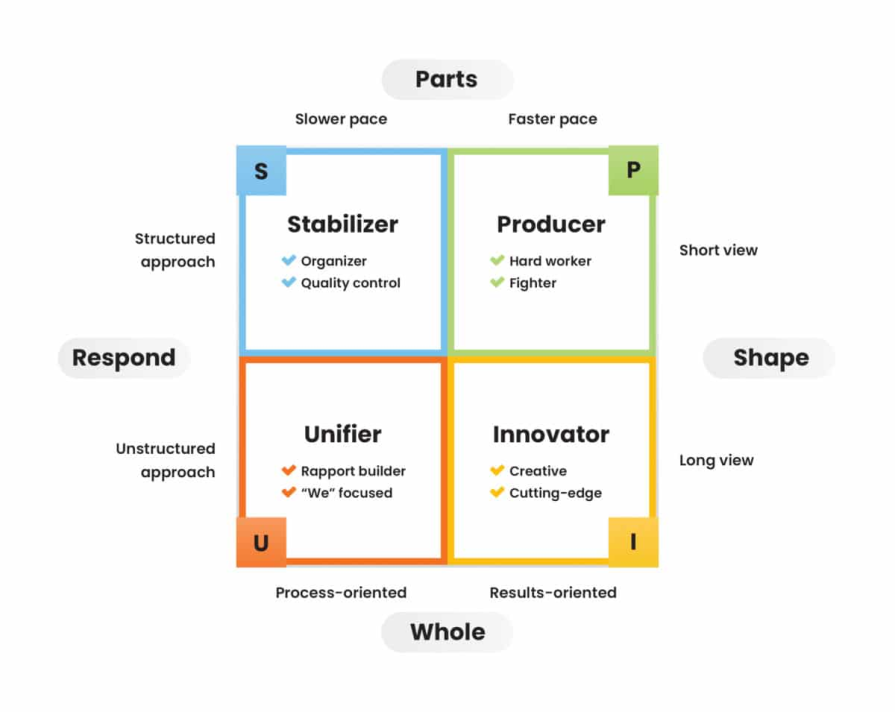Every organization has a strategy that sets goals and visions for the company. While employees are responsible for delivering on the goals, the management is accountable for ensuring it’s done correctly. Management focuses on comprehending and following through on those promises, creating processes, and ensuring that employees live up to the company’s standards.

Managers need to build good relationships and establish a culture among the people. However, there’s no one-size-fits-all approach to management. As a PM, you need to familiarize yourself with a range of styles and select one that best aligns with your personal goals and the success of your team.
In this article, you’ll learn the different types of management styles, as well as how to go about selecting the right one.
A management style refers to the specific way you approach directing your team towards organizational goals. Management styles have a significant impact on team dynamics and performance because they shape the way teams interact and get work done. Because of this, you should be intentional about selecting a management style that leverages your personal abilities to get the most out of your team.
When selecting a management style, remember that effective managers understand that the nature of the field requires you to be adaptive and often utilize a combination of different styles to accommodate for your unique situation.
Let’s explore the four main management styles to understand and identify the different combinations of management styles you can employ within your product team.
The democratic management style is considered one of the most collaborative approaches. In this approach, the manager involves the entire team in all discussions and makes decisions after hearing everyone’s opinion. The management prioritizes achieving results and fostering team members’ personal growth and development.
As this management style has proven effective and reliable, different approaches have evolved to implement the best practices for effective democratic management. There are three major approaches to implementing democratic management styles.
In the collaborative approach you give the utmost importance to the team’s voice and decide on critical things after you hear all perspectives. Collaborative management establishes transparency and open communication.
The transformational approach has you inspire and motivate people with an influential vision and showcase the positive impact of the contributions toward long-term goals. This is effective when your organization adapts to change and wants to keep pace with deliveries. You need to be agile, continuously iterate, and have a growth mindset.
For the coaching approach you act as a coach or a consultant and come in to solve any problems the team faces or coach them to learn and grow from every opportunity.
The democratic management style is most suitable for creating an innovative product and fostering a self-driven culture. Still, this management style has pros and cons like every other. Knowing if the pros outweigh the cons is situational based on the organization’s needs and goals.
Pros of the democratic management style include:
Cons of the democratic management style can be:
The common traits of democratic management and managers are charismatic, inspirational, open to feedback, result-focused, visionary, and looking at the long-term goals and more significant picture against short-term gains.
Autocratic management, also known as authoritarian, is a top-down approach where a leader sets a direction and the manager controls the outcome by maintaining command. The autocratic management style works when the organization needs to deliver on security, regulations, or sales goals. A manager can have two main approaches to implementing authoritarian management styles: transactional and persuasive.
The transactional approach is one of the most common approaches for implementing autocratic management styles. In this approach, you use a reward and punishment mechanism to motivate employees and help them reach their goals. There are clear directions and a good structure for following up on performance and monitoring any deviation from the plan.
On the other hand, a persuasive approach occurs when you use persuasion techniques to connect the outcome to the organization’s goal. In this model, employees have true faith in the manager and can follow any direction, as they have compelling and almost paternalistic feelings about the manager.
Pros of the autocratic management style:
Cons of the autocratic management style:
The laissez-faire management style is a no-interference management style where you focus on your work and let your team do theirs without direction or oversight. As an overall management style, laissez-faire leadership usually applies to upper management teams of highly skilled and experienced employees.
A typical example of where this management style thrives is in consultancy firms where employees strive to become partners and other executives. Employees can get creative in achieving their goals and the management stays clear of the way unless there is any misconduct. The primary motivation for the employee is self-growth by growing the organization.
The primary approach in this management style is the delegative approach. You delegate the targets to colleagues and let them run the course without direction. Highly driven, creative people thrive under this management.
Pros of the laissez-faire management style:
Cons of the laissez-faire management style:
In the facilitative management style, also known as conducive management, you act more as a servant leader, trying to facilitate the team’s needs to achieve the results. This management style works best when your team comprises experts and you trust those experts will achieve their results provided they have a good environment and support. The main focus is providing the base for experimentation and learning opportunities.
Since this management style is relatively new and only applicable to specific high-expertise areas, the only approach that has been close to implementing a facilitative management style is the servant leadership approach. Usually, the employees are significantly invested in the organization’s goal and take it upon themselves to reach it, like making a scientific discovery or creating a solution that has never been done before.
Pros of the facilitative management style:
Cons of the facilitative management style:
Although all management styles have their merits and can be applicable based on the company’s goal, it’s crucial to identify the company’s needs before deciding on the management style. Also, every person has strengths and weaknesses, and when operating from their strengths areas, leaders tend to perform better and feel less worn down.
Before you set out to choose the right management style to adopt for your team, there’s some preparatory work that needs to be done to ensure long-term success.
When choosing leaders and securing the management style, you should ask yourself what the objectives for the next five years look like. This will help to define the focus of the entire organization.
Suppose the purpose of the organization is to create order and efficiency. In that case, the management style will differ from the organization’s goal to generate customer-centricity and innovation. Identifying the most suitable management style will broadly impact the outcome and how smoothly or bumpily you reach there.
After securing the objective and identifying the correct management style, choosing the right manager is another crucial aspect. There are four main traits in a person. One can be more profound than others, and identifying the right match of the deep trait will create a fitting environment. The four main characteristics of a manager are producer, stabilizer, unifier, and innovator.
The producer generally has a faster pace and shorter view. Meanwhile, the stabilizer has a slower speed and an organized, structured approach. The innovator thinks long-term, is creative, and result-oriented. The unifier is a more process-focused rapport builder with a more unstructured system. Matching the right kind of leaders with the most suitable management styles is the fastest way to achieve successful results:

Alining the management style with the leadership helps you achieve goals more effectively.
For example, when the organization focuses on being a customer-centric, innovative company, the leader is visionary, charismatic, and transformational. The management style should also have a transformational approach with open-mindedness to change, agility in deliveries, and coaching where the team needs help in the direction the leadership sets.
This helps with the right mindset and approach from top to bottom in an organization. On the contrary, if the management has an autocratic approach, teams might hesitate to experiment and innovate, slowing down the implementation and actualization of the vision of the leadership.
Management is crucial to building a bridge between leadership and the team. The main focus of managers is to execute on the company’s vision, as well as boost employee morale, build a relationship, and deliver results while adhering to company policies and standards. Every manager has a dominant management style, but in practice, the best managers use a mix of management styles based on the situation and the need.
The four main management styles are democratic, autocratic, laissez-faire, and facilitative. All approaches a manager takes can be collated into the four main management styles. Every management style has its merits and demerits. Hence, before implementing any management style, it is crucial to understand the organization’s goal, leadership structure, and underlying problem that needs to be solved.
Featured image source: IconScout

LogRocket identifies friction points in the user experience so you can make informed decisions about product and design changes that must happen to hit your goals.
With LogRocket, you can understand the scope of the issues affecting your product and prioritize the changes that need to be made. LogRocket simplifies workflows by allowing Engineering, Product, UX, and Design teams to work from the same data as you, eliminating any confusion about what needs to be done.
Get your teams on the same page — try LogRocket today.

A practical five minute revenue estimation method to help product managers compare ideas, drop low impact features, and prioritize smarter.

A practical guide for PMs who want to stop being bottlenecks, delegate smarter, and lead teams effectively with a clear ownership framework.

Stop letting unreliable data block features. Treat data as inventory to track quality, ownership, and ship with confidence.

Learn why slide decks slow teams down and explore better tools like whiteboards, PRDs, and prototypes to improve collaboration and alignment.